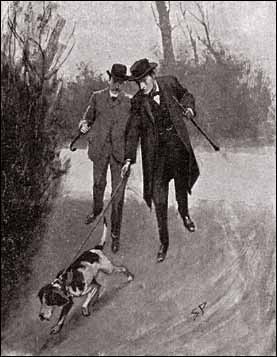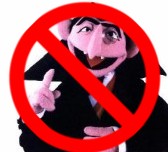
I’m slowly catching up on the Chronological Sherlock Holmes Challenge. I read three stories today: “The Adventure of the Bruce-Partington Plans,” “The Adventure of the Veiled Lodger,” and “The Adventure of the Missing Three-Quarter.” I’m now caught up to where I should have been as of mid-December. I need to read four more stories to catch totally up.
Sherlock’s brother Mycroft shows up in “The Bruce-Partington Plans” to enlist Sherlock’s help in a matter of great importance to the government: plans for a submarine have been stolen, and one of the men who might have done it has been found dead in the subway.
“The Veiled Lodger” is a story about a former circus worker who wants to unburden her soul and tell her story to Sherlock Holmes before she dies.
In “The Missing Three-Quarters” Sherlock is on the case to find a missing football star.
Of the three stories I read today, my favorite was easily “The Bruce-Partington Plans.” Mycroft is a great character. The atmosphere in the story also plays a brilliant role: London is so foggy in this story that just about any crime might be committed. Parts of this story find their way into the BBC Sherlock episode “The Great Game”: Andrew West’s name is similar to murder victim Arthur Cadogan West in the story, and their deaths are similar; John Watson’s blog post also refers to the Bruce-Partington Plans. “The Veiled Lodger” was kind of weird and forgettable. There was no real mystery to it. “The Missing Three-Quarter” was a little better than “The Veiled Lodger,” but only because there was at least a little mystery to solve—although it does have some choice Sherlock Holmes-style sarcasm. I don’t think any parts of “The Veiled Lodger” or “The Missing Three-Quarter” have found their way into BBC’s Sherlock.
“The Bruce-Partington Plans” Rating: 




“The Veiled Lodger” Rating: 




“The Missing Three-Quarter” Rating: 




 I read these stories as part of the Chronological Sherlock Holmes Challenge. They are the 41st, 42nd, and 43rd stories in the chronology (time setting rather than composition). Next up is “The Abbey Grange.” I am about four stories behind.
I read these stories as part of the Chronological Sherlock Holmes Challenge. They are the 41st, 42nd, and 43rd stories in the chronology (time setting rather than composition). Next up is “The Abbey Grange.” I am about four stories behind.



